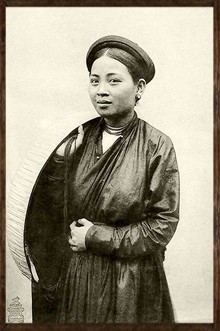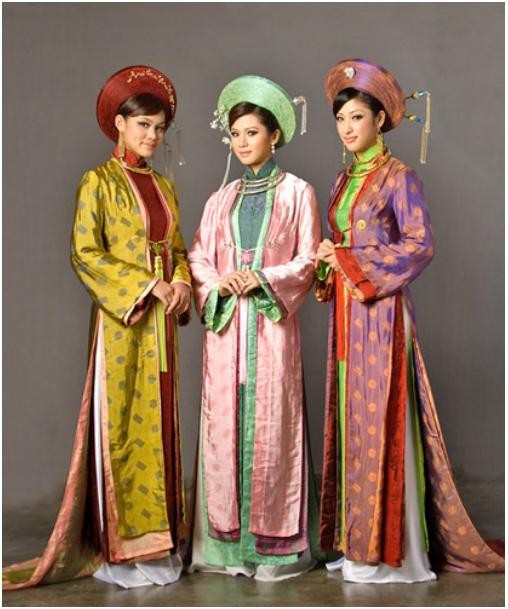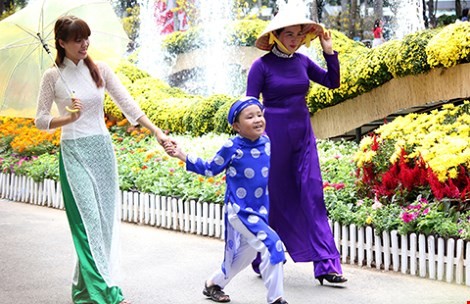(VOVworld) - We’re very glad to get a letter from David Ansell of Sussex, England, after quite a long time. He listened to our broadcast on January 19 on 7280 khz and rated SINPO at 45433 with moderate fading. Ansell wrote: “Your station on shortwave is much valued and enjoyed. Please continue this way. Despite modern trends, I don’t use the internet, email, or social media. Greetings from Horsham which is 37 miles south of London and 20 miles north of the English Channel.”
B: VOV provides information on a multi-media platform to keep up with the digital technology trend, but continues its shortwave broadcasts for you and the many other Dx’ers worldwide. We have a lot of listeners on every continent who share the same passion for DX’ing, and collecting QSL cards and stamps. We hope to receive regular feedback from all of you to help us improve our program.
A: I’m reading a letter from Anker Petersen of Denmark. He wrote: “I’ve been listening to shortwave stations since 1957 and regularly listen to a lot of radio stations from all parts of the world. I also collect QSL cards, pennants, and stamps. I am interested in folk music and political developments in the world.”
 |
5-flap Ao Dai in the 18th century (photo:baotangaodaivietnam.com)
|
B: Mr. Petersen reported listening to VOV’s broadcast on January 22 from 21:30 UTC to 21:58 UTC on 7280 khz and 9730 khz via the Son Tay broadcasting station. He used an AOR AR7030Plus receiver with a 28-meter-long antenna. Mr. Petersen’s Dx’ing corner is in his house with garden, about 15 km west of Copenhagen.
B: He commented on the signal: “The reception on 7280 khz was poor with moderate signal strength and little atmospheric noise and moderate fading. But your signal was heavily disturbed by China Radio International in English on 7285 khz. Your SINPO was 32432. Reception was also very poor on 9730khz with SINPO at 15221.”
 |
Ao dai in the 1960s (photo:baotangaodaivietnam.com)
|
A: Thank you, Mr. Petersen, for your feedback, which is useful for our technical monitoring. The details in your report corresponded with our station log so we will confirm it with our QSL card.
B: Risto Happonen of Finland listened to our program on 7280khz and rated SINPO at 55545. In addition to technical feedback, Mr. Happonen gave us his overview of our program and his favorite features on VOV: the Mailbag, the News and Current Affairs, folk music, and reports on Vietnam’s lifestyle, economy, tourism, and history.
A: Thank you, Mr. Happonen, for your comments, which clearly show us what kinds of information we should focus on to make our programs interesting to our listeners. Here I have an email from Ashik Eqbal Tokon of Bangladesh after he watched a video clip on the VOVWorld Service website. It starts with a line from the clip: “South Korean women have the hanbok. Japanese have the kimono. And Vietnamese women have the “Ao dai”. Aesthetic perspectives may change from time to time but the beauty of “Ao dai” is forever.”
 |
| Ao Dai in the 1960s |
B: The clip was inspirational, said Ashik Eqbal Tokon. “You aired plenty of features, news, and articles about the Ao Dai festival in Hanoi city. As a regular listener of VOV, I followed them all. But today’s quote is a unique one. After the statement on the clip I really fell in love with Ao dai. I hope I will be able to collect some Ao dai for my daughter Tandra, who celebrates her 6th birthday on 14 February 2017. Now, a request to my favorite Letter Box: post some snap shots of this traditional Dress, focusing on its beauty.”
A: Wow! It’s lovely to know that you find our stories inspirational. Vietnam’s Ao Dai, or long gown, has undergone many transformations over the years to reach its current form. Its evolution began in the 19th century, when it was born from the four-flap dress, a loose dress worn over a white blouse and halter with a fabric belt. The Vietnamese decided to simplify it by joining the two narrow panels, setting the stage for the very first appearance of the modern Ao dai.
 |
| Ao Dai in daily life |
B: In each historical period, people have had different notions of what makes a beautiful Ao dai. In the 1930s, it was transformed into a gown with two elegant panels reaching to the ground, fitting the wearer’s body by using pins and a nipped-in waist. It had a raglan sleeve based on Western fashions, bringing it a step closer to its current form-fitting style.
A: Until 1958, the Ao dai was a daily outfit in the North, but by that time, it had fallen out of fashion in the trendier South. When Madam Trần Lệ Xuân debuted an Ao dai with a boat-neck and fitted bust, nearly all Southern women copied Xuan’s modified Ao dai.
B: The Ao dai was then relegated to special occasions and diplomatic events. Fashion designers have tried to modernize the Ao dai and stamp their ego on their designs. In truth, the beauty of the Ao dai depends on the aesthetic sensibility of each period.
_copy.jpg) |
| Ao Dai is worn by both girls and boys |
A: Sy Hoang, a famous Ao dai designer, said “the Ao dai that people consider modern now is the Ao dai of the 70s. Let each woman decide what kind of Ao dai she wants to wear.” One of Hoang’s Ao dai collections is on permanent display at the Museum of Quilts and Textiles in San Jose, California, the US.
B: Hoang has created Ao dai collections combining Vietnam’s Ao dai with the typical costumes of other countries, including France, the US, China, Japan, the Philippines, Singapore, South Korea, and India.
A: Small girls love to wear Ao dai like their grandmothers and mothers. Outfits for children are loose-fitting to let them move freely. Mr. Tokon says he wants to collect some Ao dai for his 6-year old daughter Tandra. What do you think?
B: No problem. There are online shops selling Vietnamese Ao dai for children and they ship products abroad. We can send you some suggestions by mail. For now, let’s continue reading letters from listeners. We regularly receive emails from Paul Walker of the US. Today, we got a postcard from him saying that he hasn’t been able to tune in much lately due to extreme cold weather and poor conditions.
A: It’s a pity to hear that, Mr. Walker. Take care of yourself in the harsh weather. We hope the weather will improve soon. In Northern Ireland, Jordan Heyburn tuned in to our program on February 06 and rated SINPO at 55455. He used an Icom IC-R70 receiver with a Wellbrook ALA.
B: He wrote: “I really enjoyed listening to your English language service today. It was fascinating. I loved the music segment towards the end, and especially the worship ceremony. I love to learn about other countries’ traditions.”
A: Your reception report will be verified soon and we hope you’ll keep tuning in to our program to learn more about Vietnam. We thank Shivendu Paul, President of the Metali Listeners’ club of India for sending us photos of the World Radio Day celebration at his club.
B: It’s interesting to hear that your club organized a seminar, a drawing, and a quiz for students to promote interest in radio listening. We hope your club will continue to grow and sponsor such fantastic activities.
A: Dear listeners, thank you very much for tuning in to our programs and sending us feedback. We’ll verify your reception reports and hope you’ll receive our QSL cards soon.
B: We welcome your feedback at: English Section, VOVworld, Voice of Vietnam, 45 Ba Trieu Street, Hanoi, Vietnam. Our email address is englishsection@vov.org.vn. Thank you for listening to VOV on shortwave and for visiting our website. Good bye until next time.